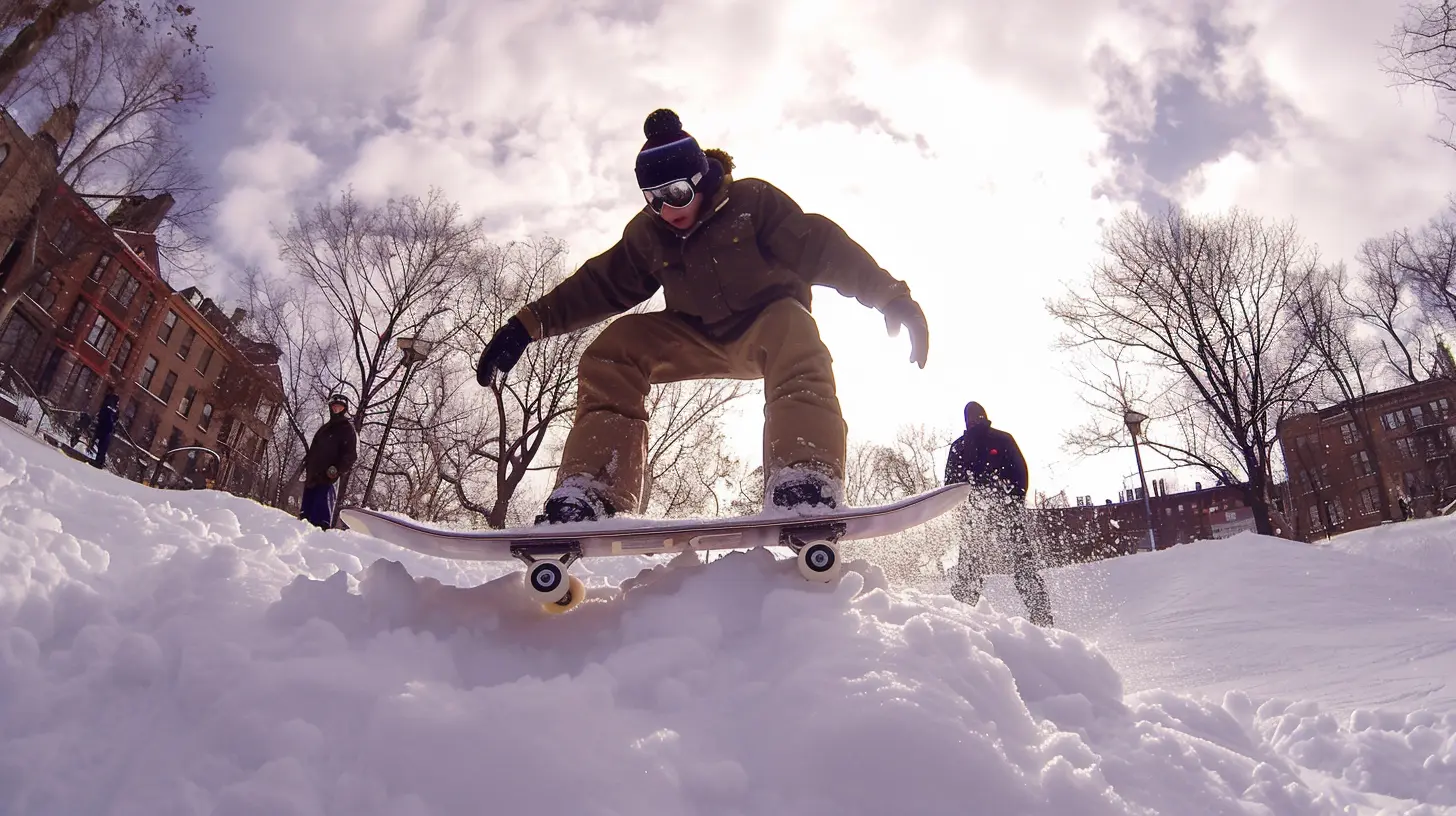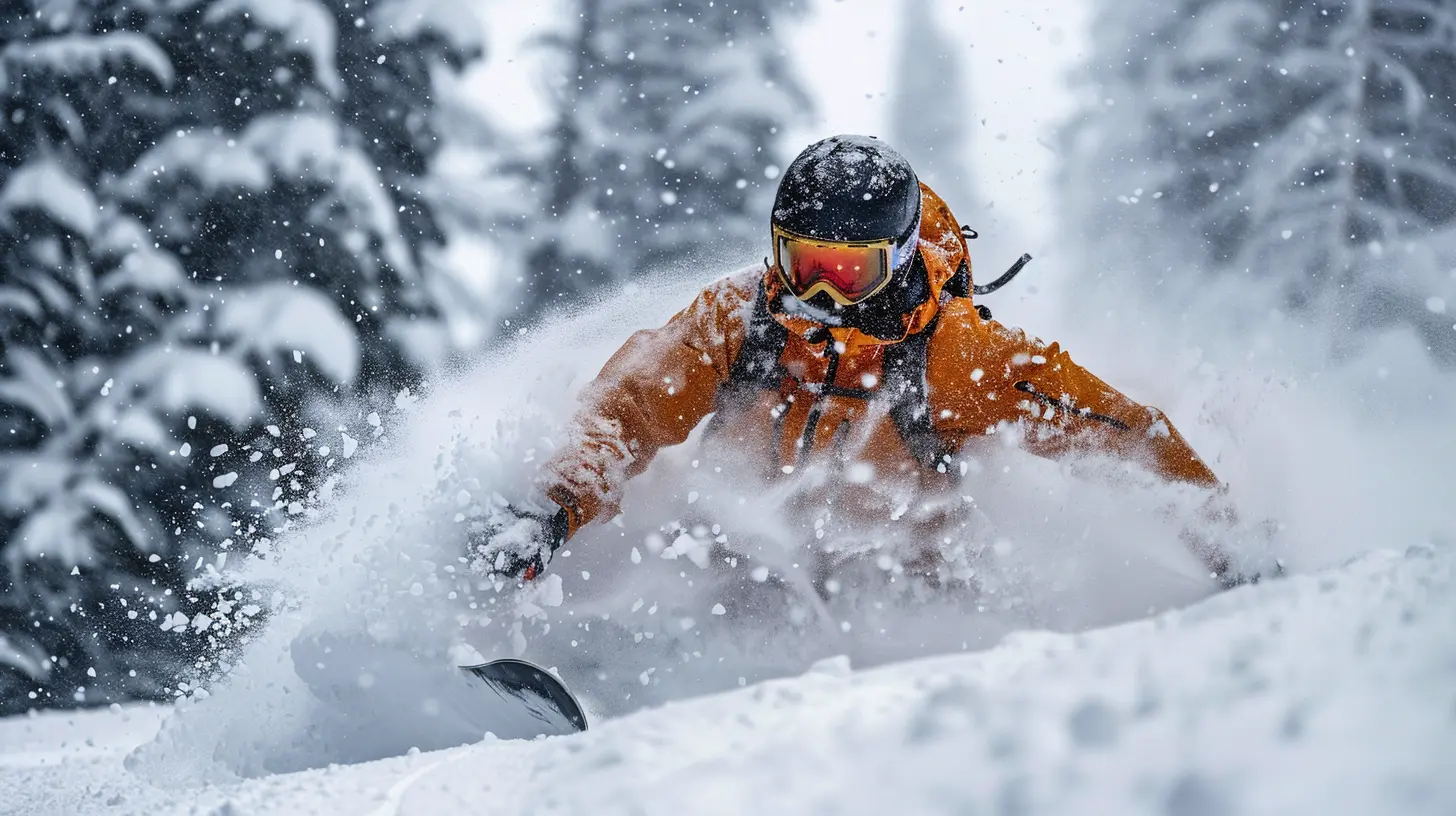Why Flexibility Is Key to Better Snowboarding Control
4 June 2025
Snowboarding is all about control, balance, and fluidity. Whether you're carving down a steep slope, hitting jumps, or weaving through trees, one factor can make a massive difference in your performance—flexibility.
Many riders spend hours perfecting their stance, practicing turns, and building strength, but they often overlook the importance of flexibility. The truth is, flexibility is the secret ingredient that separates good riders from great ones. It improves your range of motion, reduces the risk of injury, and helps you react quickly to changes in terrain.
So, why is flexibility so crucial for snowboarding control? Let’s break it down step by step.

The Connection Between Flexibility and Snowboarding
Flexibility isn't just for yogis—it's a game-changer for snowboarders, too. At its core, snowboarding is a dynamic sport that demands constant adjustments. Your body has to twist, bend, and shift to maintain stability and control. Without flexibility, these movements become stiff and unnatural, making it harder to maintain balance.Think of it like this: Imagine trying to steer a car with frozen hinges in the steering column. You'd struggle to make precise turns, right? That’s exactly what happens when your muscles are too tight—you lose the ability to smoothly transition between movements.
How Flexibility Improves Snowboarding Control
1. Better Range of MotionThe more flexible you are, the easier it is to shift your weight and adjust your stance. This makes turns smoother, landings softer, and quick movements more effortless.
2. Faster Reaction Time
Snow conditions change in an instant. Whether you're dodging moguls or maneuvering through unpredictable terrain, flexibility enables you to react fast without straining your muscles.
3. Reduced Risk of Injury
Tight muscles are more prone to strains and tears. Flexibility helps your body absorb impacts better, reducing stress on your joints and ligaments.
4. Improved Balance and Stability
Snowboarding is all about staying upright while moving at high speeds. Flexible muscles allow for better weight distribution, making it easier to maintain balance even on uneven terrain.
5. Enhanced Muscle Endurance
When your muscles are flexible, they don’t fatigue as quickly. This means longer, more enjoyable rides without feeling exhausted halfway down the mountain. 
The Key Muscle Groups for Snowboarding Flexibility
Not all flexibility is created equal. For snowboarding, specific muscle groups play a bigger role in mobility and control. Focusing on these areas will maximize your performance:1. Hips and Hip Flexors
Your hips act as the foundation for most of your snowboarding movements. Whether you’re carving, jumping, or shifting stance, hip flexibility is essential. The more mobile your hips, the easier it is to flow with the terrain.2. Hamstrings
Tight hamstrings can limit your ability to bend your knees properly. Since knee flexion is crucial in absorbing shock and maintaining control, flexible hamstrings go a long way in improving performance.3. Lower Back
Snowboarding requires a lot of twisting and core engagement. A stiff lower back can lead to poor posture and instability, making turns and rotations more difficult.4. Ankles and Calves
Your ankles are constantly flexing and extending as you ride. Flexible ankles help with edge control and fine-tuned movements, preventing unnecessary falls.5. Shoulders and Upper Body
Many people overlook upper-body flexibility, but it plays a big role in balance and rotation. Proper shoulder mobility helps with smooth turns and aerial maneuvers.
Best Flexibility Exercises for Snowboarding
Improving flexibility doesn’t mean you have to commit to hours of yoga. Just a few targeted stretches and mobility exercises can make a huge difference. Try incorporating these into your routine:1. Hip Flexor Stretch
- Step one foot forward into a lunge position.- Keep your back leg extended and push your hips forward.
- Hold for 30 seconds on each side.
2. Seated Hamstring Stretch
- Sit on the floor with your legs straight out.- Reach forward and try to touch your toes.
- Hold for 30 seconds.
3. Cat-Cow Stretch (For Lower Back and Core)
- Get on all fours with hands under shoulders and knees under hips.- Arch your back upward, then slowly dip it downward.
- Repeat 10 times.
4. Ankle Mobility Drill
- Stand with one foot slightly in front.- Shift your weight forward, pushing your front knee over your toes.
- Repeat 10 times per side.
5. Shoulder Stretch
- Reach one arm across your body and hold it with the opposite hand.- Hold for 20-30 seconds and switch sides.

How to Incorporate Flexibility Training into Your Snowboarding Routine
You don’t need to spend hours stretching every day. Instead, aim for 10-15 minutes of flexibility work before and after your snowboarding sessions.Before Hitting the Slopes (Dynamic Stretching)
Warming up before snowboarding is crucial. Dynamic stretches (movements that activate muscles) work best here. Try:- Leg swings (front to back, side to side)
- Torso twists
- Lunges with rotation
After Snowboarding (Static Stretching)
After a long day on the mountain, your muscles are tight and fatigued. Static stretches (holding a stretch for 20-30 seconds) help loosen up the tension and promote recovery.Common Flexibility Mistakes to Avoid
Even if you're committed to flexibility training, there are a few common mistakes that can slow your progress:1. Skipping Warm-Ups
Stretching cold muscles can increase the risk of injury. Always warm up before stretching.
2. Not Holding Stretches Long Enough
Quick, half-hearted stretches won’t do much. Hold each stretch for at least 20-30 seconds to see real progress.
3. Ignoring Small Muscle Groups
Many riders focus only on major muscle groups, but small muscles like those in your ankles and wrists matter too.
4. Being Inconsistent
Flexibility improves over time. Stretching once a week won’t cut it—make it a regular habit.
Final Thoughts
If you want to become a better snowboarder, flexibility is non-negotiable. It’s the key to better control, faster reaction times, and fewer injuries. Plus, it makes snowboarding feel more effortless and enjoyable.So, next time you hit the slopes, don’t just focus on strength and technique—prioritize flexibility. Your riding (and your body) will thank you.
all images in this post were generated using AI tools
Category:
SnowboardingAuthor:

Easton Simmons
Discussion
rate this article
3 comments
Stephanie McKellar
Flexibility isn’t just for yogis! Snowboarding demands more than just a tough exterior—it's about bending without breaking. Embrace that stretch, and watch your control soar! So, are you ready to trade rigidity for grace on the slopes? Let’s go!
June 19, 2025 at 3:13 AM

Easton Simmons
Absolutely! Flexibility enhances balance and responsiveness on the slopes, making it essential for mastering snowboarding. Embrace it for improved control and a smoother ride!
Nancy Klein
Great article! Flexibility really does play a crucial role in snowboarding. It’s fascinating how it impacts balance and control on the slopes. Embracing a flexible mindset, both physically and mentally, can transform the snowboarding experience. Thanks for sharing these valuable insights for improving our skills!
June 6, 2025 at 12:13 PM

Easton Simmons
Thank you for your thoughtful comment! I'm glad you found the insights valuable. Flexibility truly makes a difference in enhancing our snowboarding skills. Happy riding!
Juliana McCray
Great article! Flexibility really makes a difference on the slopes. It’s amazing how a little stretch can enhance control and boost confidence while snowboarding! 🏂✨
June 4, 2025 at 2:52 AM

Easton Simmons
Thank you! I’m glad you found it helpful. Flexibility truly is a game-changer for snowboarding! 🏂✨



